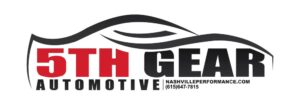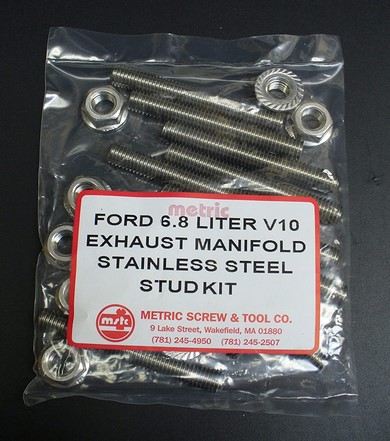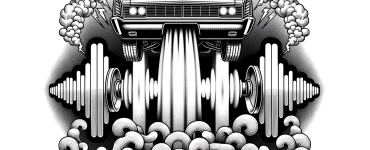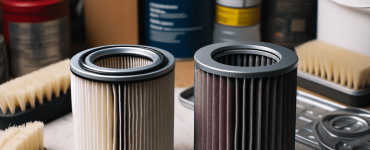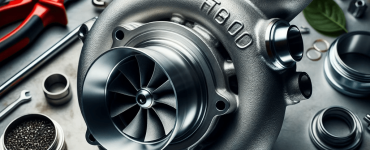Ford Triton V10 Engine Problems
Why did Ford retire its V10 engine? We go through the typical issues and provide answers to some of the most commonly asked questions regarding the engine’s dependability.
Over the years, Ford has created a number of famous engines. The Triton V10 was not as well-known as the 5.0-liter Coyote or 4.6-liter V8s, despite its potency. This was a strong engine that was used in a variety of Ford cars, including the well-liked F250 and F350 Super Duty trucks.
The Triton V10 has a good reputation for durability and dependability, but it also had several potential concerns to consider, such as a cracking PCV valve hose, spark plugs that would shoot out of the cylinder heads, and exhaust manifold bolt failures.
In this article, we go through the Triton V10’s history and its aforementioned difficulties, as well as clarify important concerns about this engine and its dependability.

What is the Ford V10 All About?
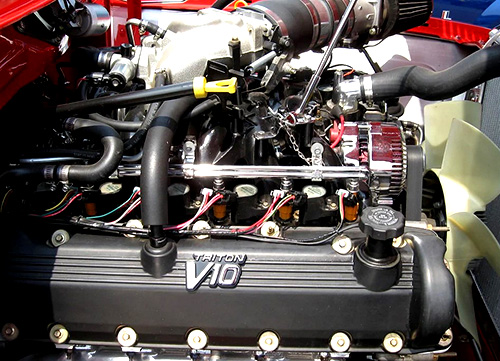
The Ford V10 was originally developed for the E-Series vans and motorhomes in 1997, and it’s a 6.8L V12 with twin cylinders stretched! To create this engine, Ford simply lengthened the modular 5.4-liter V8 introduced at the same time by two cylinders.
Ford had been using the flexible modular engine family since 1991, so we may guess that it knew its ins and outs. Other members of the line include the 4.6-, 5.0- and 5.4-liter V8s.
The V10 was originally a 2-valve engine from 1975 until 2005. They entered the F250 via the F550 and Excursion SUV after debuting in Ford’s van line. This engine produced between 305 and 310 horsepower and 420 to 425 lb-ft of torque.
In 2005, a new version of the V10 debuted. The new and improved V10 has three valves and makes 365 horsepower and 460 lb-ft of torque. This engine was powerful enough to be used in the F750 as well as the Blue Bird school bus, making it possible to power vehicles with up to 365 horsepower.
Ford Triton V10 Vehicle Applications
- 1999-2010 Ford F250 Super Duty
- 2005-2010 Ford F350 Super Duty
- 1999-2005 Ford Excursion
- 1999-2019 Ford E250 and E350 Ecoline
- 2005-2019 Ford F450/F550
- 2012-2019 Ford F650/F750 medium duty trucks
- 1999-2019 F53 Chassis (motorhomes)
The Ford V10 is a naturally aspirated single overhead cam workhorse that was first introduced in 1999 and was discontinued after 2019. The engine generated 360 horsepower and 460 lb-ft of torque. It was included in a number of both commercial and recreational Ford trucks as part of Ford’s Modular engine family, including the F-250 and F-350. Most notably, it was used in Ford’s Super Duty trucks, including the F-250 and F-350.
It was also included in the F-450, F-550, F-650, and F-750. This engine impressed the automotive press right away, including Motor Trend. In its road test of the 1999 Ford F350 Super Duty Crew Cab, Motor Trend praised the Triton V10 for being “possibly the finest” of Ford’s Modular engine family.
The 6.8 V10 was also used in Ford’s Econoline cars, F-53 Motorhomes, and the popular Ford Excursion big SUV.
In 2004, the Triton V10 served as the blueprint for one of Ford’s more daring prototype efforts. The engine was heavily modified before being placed in a Mustang, according to reports.
Ford’s Powertrain Research and Advanced Engine Development group, led by Kevin Byrd, who you may remember as a member of the dynamic duo on TV show Two Guys Garage in the early 2000s, began the project as a ‘what if’ concept.”
It’s time to get into the nitty gritty now that we’ve covered a quick history of the Triton V10. Check out 1A Auto’s video coverage of the top 1999-2007 Ford F-250 engine issues, above, for a sneak peek at what’s next.
Ford Triton V10 Reliability
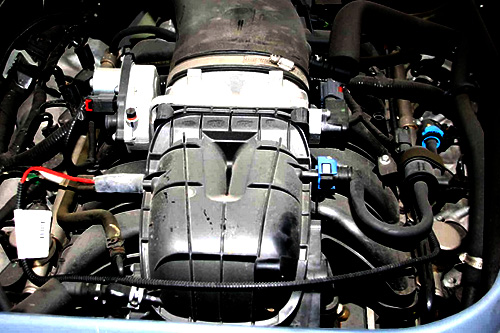
We’re aware that the V10 has some strong engineering foundations as part of the Ford modular engine family. And the fact that Ford chose to employ this engine in a variety of heavy-duty trucks should speak volumes about its durability. After all, commercial buyers will not accept fidgety or weak engines in their business vehicles.
The V10 appears to be a very durable engine, based on the typical problems and owner complaints on various Ford boards. In fact, it’s difficult to discover anyone who has major issues with the Ford V10’s durability.
So How Many Miles Can You Expect from a V10?
It’s difficult to know how long an engine will last you. There is no standard registry of engines, so all we can do is go off owner and mechanic testimonials when it comes to the V10’s durability. Sure, it isn’t science exact, but this approach usually works quite well. When owners have had terrible encounters with a specific vehicle or engine, they are frequently quick to inform others.
Checking the various Ford truck forums, we discovered a plethora of reports from owners who had no issues with their V10s, as well as engines that ran for more than 200,000 miles. One owner claims to have 439,000 miles on his V10 engine with only minor problems along the way. That’s into diesel territory!
If you have a well-maintained V10 in your hands, I see no reason why it shouldn’t last at least 200,000 miles if you follow the instructions in your owner’s handbook. That means changing the oil and other items as directed in your owner’s handbook – fuel filters, transmission fluid, etc.
Common Ford Triton V10 Engine Problems
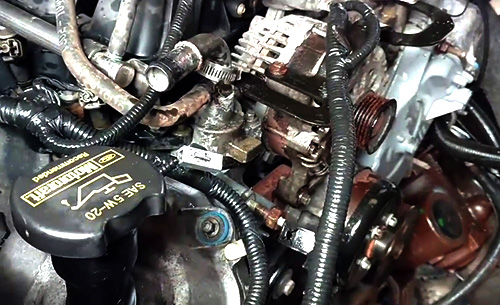
Triton V10 Spark Plug Blowout
The Triton V10 engines manufactured between 1991 and 2002 have an ill-chosen design flaw within the cylinder head and spark plug designs that can result in the plugs being ejected or welded to the cylinder head.
Cast iron engine blocks with aluminum cylinder heads with centrally positioned spark plugs were used in the Triton V10 engines. In contrast to the aluminum cylinder head, which was made of steel and had very different heat tolerances, the spark plugs were manufactured of steel rather than aluminum.
The spark plugs’ holes in the cylinder head were the most significant design flaw. To fit within their respective wells in the cylinder head, the sparks had to be extremely tiny, with a diameter of just 5 inches. To compensate for the restricted depth, Ford shortened the thread length, leaving only 4 threads on each spark plug rather than 10 as is typical. As a result, there was initially little keeping the spark plugs in place.
Because of the heat sensitivity, the threads are welded to the head, which compromises the material and grip. When Triton V10 spark plugs weld themselves to the head, two things occur:
- When you try to remove the spark plugs, you can’t because they’re firmly welded in position.
- Because the material deteriorates and fractures, the plugs literally shoot out of the head.
Prevent Triton Spark Plug Blowout
There are a few helpful hints for preventing OEM plugs from coming apart, such as not over-torquing the spark plugs, using anti-seize, and so on. However, due to the poor spark plug design and metal properties of the head and OEM plugs, the best choice is to utilize a thread repair kit like HeliCoil or Cal Van.
The easiest method to replace your 1978-1993 Toyota Corolla’s spark plugs is with a kit. These kits, as the name implies, simply require you to re-tap the plug hole and then install a thread insert that will keep the spark plugs in place. The thread inserts are made so that metals don’t weld together and cause another blowout.
Triton Cracked PCV Hose
The term “positive crankcase ventilation” refers to a gas recirculation mechanism in modern gasoline engines. The Positive Crankcase Ventilation, or PCV, system is a standard feature in modern cars. When gasoline is burned, it generates waste gases as a byproduct. Some of these gasses accumulate in the engine while others are vented into the atmosphere through the exhaust system.
The waste gases travel down to the crankcase, which contains oil below the engine. If the fumes remain in there for too long, the oil will be ruined and cause significant engine malfunction. The PCV system includes a valve in the crankcase that releases these waste gasses into the intake manifold for them to be re-burned in the engine once more.
The PCV valve sends the gases back to the intake manifold through the PCV hose when it opens. The PCV valve is linked to the intake system from the PCV hose.
The PCV hose is composed of plastic, which is a vulnerability in the 6.8 Triton. When the hose fractures, the intake manifold loses pressure and air can escape from the intake system, causing numerous performance problems.
PCV Hose Crack Symptoms
- Rough idling (most common)
- Whistling or hissing sound from the engine
- Cylinder misfires
- Bad fuel economy
Fortunately, replacement options are straightforward. Even for novice mechanics, replacing the PCV hose and reinstalling it should be simple since it is readily accessible within the engine compartment.
Triton V10 Exhaust Manifold Failure
Exhaust manifolds are connected to the engine cylinders and the exhaust system. They move used engine air to the exhaust system, where it is then vented into the environment.
The bolts or studs that connect the manifold to the engine block on the Triton 6.8 are prone to rusting and failing. This is typically due to corrosion over a number of years and is more common in regions where salty air is abundant. When these bolts fail, there is no significant damage done. When you’re driving, no part of the manifold will fall out from underneath the car.
However, the bolts will loosen over time and allow air to leak out. You’ll lose all of your backpressure, which can lead to a variety of performance problems.
Exhaust Manifold Leak Symptoms Triton
- Loud exhaust noise
- Loss of acceleration
- Smelly exhaust (can smell from inside the car usually)
- Bad fuel economy
On the Triton, rusted-out bolts are generally the source of leaks, but cracked exhaust manifolds can also cause them. If the whole manifold fractures, you’ll need to replace it. If it’s only bad bolts causing the problem, a cheap bolt kit may help you repair it quickly.
A Warning About Longevity Numbers
Keep in mind that no two used cars are the same, which can alter how long an engine lasts. Owners treat their automobiles differently, from the amount of use and abuse to the frequency of maintenance. A high-mileage engine that has been maintained properly may outperform a lower-mileage truck with a poor maintenance history in terms of performance and longevity.
The truth is that there is no correct answer to the question of how long the Ford V10 engine lasts. All trucks, however, are not created equal. Some are simply more dependable than others.
Advantages of the Ford Triton V10
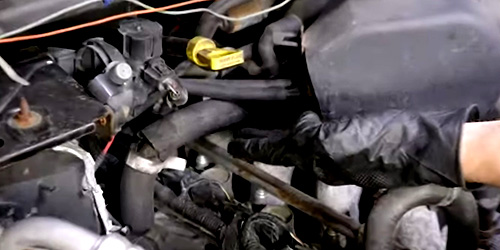
There are many disadvantages to this engine, but there are some benefits to consider as well.
Price
The V10 Fords’ reputation for being underpowered is well-deserved, but they provide the same amount of power as their diesel counterparts. Diesel trucks, on the other hand, are far more common and sell for considerably more money. It’s possible that poor fuel efficiency or a lack of understanding about these engines is to blame, but V10 Fords go for thousands less than diesel trucks. Because many consumers will only consider a diesel vehicle, they are simple to locate on the secondhand market.
Gas Power
If you don’t want to move away from your gas engine but still need a lot of power, the V10 is an excellent choice. The Super Duty V10 had 362 horsepower and 457 lb-ft of torque from 2005 to 2010. It’s true that a gasoline engine doesn’t have quite as much torque as a modern diesel, but it still has a lot of force. Even the 6.2-liter gas V8 in 2018 F-350s can’t match that kind of strength!
Hey, it’s a V10
We haven’t really talked about this before, but V10 engines are fantastic! What vehicles do you know of that have a V10 engine? The Dodge Viper and Audi R8 are two well-known supercars that use the technology. As a result, you’re in excellent company while driving your big-duty truck!
Other Issues with the Ford Triton V10

But will there be a lot of little problems along the way? “No,” say most owners, according to most owners. In reality, with the exception of a few small repairs, very few V10 drivers have required anything more than basic maintenance. Nonetheless, let’s take a look at some of the issues with the Ford V10.
Fuel Economy
Okay, not even the most optimistic people expect their vehicles to get Prius-like mileage, especially those with heavy-duty capabilities. The Ford V10, on the other hand, has a terrible reputation for consuming far more gasoline than any other product on the market. When compared to diesel trucks, the V10 drinks down fuel like it’s out of fashion.
On fuelly.com, the majority of these trucks have average fuel efficiency of 8 to 10 mpg. That’s low, but diesel engines are to be expected. After all, these are big, heavy trucks that are frequently towing and transporting huge loads.
According to owner feedback, all of the diesel engines, including the long-standing 7.3-liter V10, get 3 to 6 miles per gallon better than the V10. That’s a big difference when we’re talking about numbers this low.
Rough Idle
One of the most frequently reported problems with the V10 is a rough running engine. Anyone who has dealt with this problem knows how aggravating it can be. The good news is that, depending on the circumstances, the solution may be quite simple and inexpensive.
If you discover a V10-engined vehicle that has an RPM problem, inspect the PCV tube first. These hoses often fracture with time, causing the rough idle. And there are plenty of videos on YouTube demonstrating how to repair this problem yourself, such as the one below:
Exhaust Problems
Aside from the idle, another major issue with Ford V10 reliability is the exhaust system. Many consumers claim that their manifold studs corrode and break, resulting in an exhaust leak. Repair kits are available online for less than $30 that will resolve the problem.
Even if your vehicle has plenty of gas and starts without a problem, it’s still preferable to have an exhaust issue than an engine problem. Still, this is something you should examine before buying a vehicle so you know what to anticipate later on.
Ford V10 FAQ

Does Ford Still Offer The v10?
In 2019, Ford discontinued the V10 engine range. However, if you’re searching for one, more than 750,000 vehicles have been sold with this engine. Many of the more recent engines developed in the last ten years have been utilized in commercial trucks like school buses, although they are still accessible.
How much horsepower (HP) does a v10 engine have?
The first V10 models were introduced in 1997 and reached 310 horsepower by 2000. The engine was increased to 362 hp with the three-valve upgrade in 2005. This was one of the final significant modifications to the engine model before it fell out of production.
How much horsepower does a 6.8 v10 have?
In 1999, the 6.8-liter V10 was introduced and produced 305 horsepower at 4,250 RPM. The engine increased to 310 hp in 2000, then to 310 hp in 2001 before reaching 362 horsepower at 4,250 RPM by 2005.
Is A V10 Better Than A V8 Engine?
The V10 has more torque than the V8. If you want to tow a heavy item, like a camper, the V10 is probably a better choice due to this additional power. The V10 is just about the greatest towing engine available without using a diesel engine. The only real benefit of the V8 is increased gas mileage since it has been continuously improved upon. You might argue that the V10 is a superior or even cooler alternative on a construction vehicle.
What year did Ford fix the spark plug problem on the v10?
In 2002, the problem with the spark plug blowing out was resolved. During the V10’s life, one of Ford’s numerous engine block and head design enhancements resolved the issue.
How much oil does a Ford v10 hold?
The oil capacity of your engine is determined by the type. The Ford Triton vehicle specs sheet indicates that the oil capacity is 6 quarts, including the oil filter. Check your owner’s handbook or look up one on the internet for your specific model to be sure of how much oil you have.
What is the best oil for a Ford Triton v10?
5W-20 semi synthetic motor oil is said to be the finest oil for a Triton V10, according to Ford. A Motorcraft FL-820 filter is recommended as an oil filter with that. Some Ford forum members also advocate 5W-30 full synthetic oil.
How can I get better gas mileage in my Ford v10?
The V10’s poor gas mileage may cause you financial strain, but there are a few things you can do about it. Every 10,000 miles, replace the air filter and maintain your tires at the recommended pressure. Try to run errands in a way that restricts the amount of time the engine has to cool down and drive as much as possible when it is warm.
A chip installed in the engine might also improve your miles per gallon. Make sure the chip you buy has a fuel-economy setting. When you don’t need extra power, the chip will decrease gas usage by giving you more power when you need it. Ford Triton V10 Engine.
There are a few things you may do to improve your fuel efficiency. Consider installing a dual exhaust and a cold air intake. Throttle body spacers are also an option. These modifications will allow your engine to breathe more efficiently while still providing power.
Ford v10 reliability in motorhomes
Despite the fact that the V10 has a very high fuel cost, it is a highly dependable engine. The V10, like other engines, requires maintenance and inspections on a regular basis. However, if you maintain an eye on things, problems with the V10 engine are rare. Although there are no reported figures for V10 engines, they have been seen to survive more than 200,000 miles.
How many miles per gallon does a v10 RV get?
The V10 has comparable fuel efficiency to other RVs, such as diesel engines. When you aren’t towing another vehicle or extra camping equipment, you can expect between 7 and 10 miles per gallon. Expect a decrease in mileage of about 5-7 miles per gallon if you are towing a car behind.
Final Words
The Ford V10 is renowned for its long-term dependability and the high mileage it accrues. It’s not unusual to read about owners who have driven 150,000 to 250,000 kilometers (93,000 to 155,000 miles) with few difficulties.
You should be able to reach those levels on your own with regular maintenance and careful driving. Then the Ford V10 comes with a number of advantages, one of which is that it makes driving a whole lot more pleasurable. You may also expect up to 90,000 miles on your spark plugs, as well as other advantages that make the engine extremely dependable and durable.
The V10 is not a flawless engine, however. It does have its drawbacks, but with the appropriate maintenance, it will last you a long time. The V10 may not be perfect, but it’s as close to perfection as you can get for Ford Triton V10 Engine
